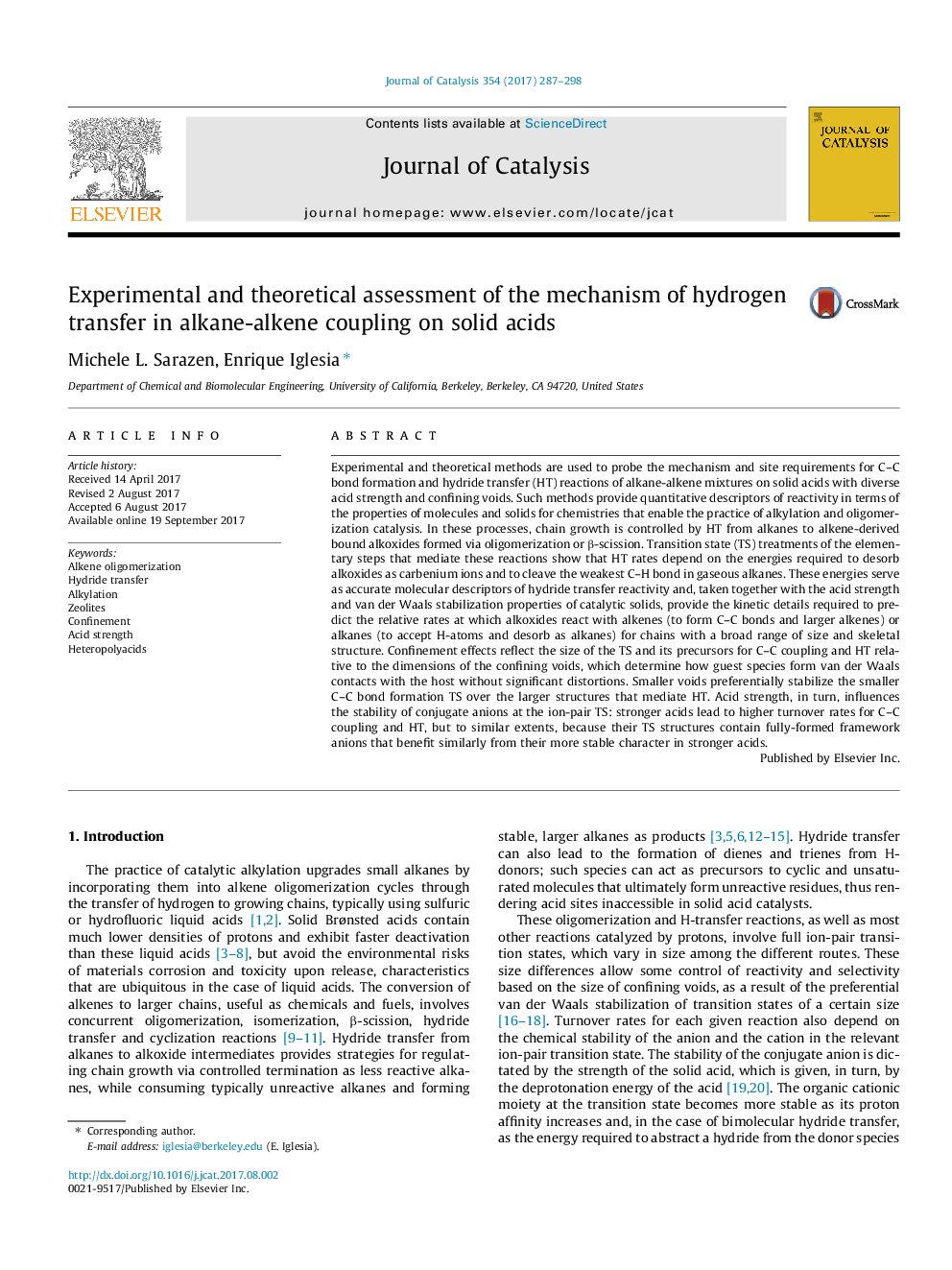| کد مقاله | کد نشریه | سال انتشار | مقاله انگلیسی | نسخه تمام متن |
|---|---|---|---|---|
| 6455531 | 1419755 | 2017 | 12 صفحه PDF | دانلود رایگان |
- Alkane-alkene mixtures on solid acids lead to CC coupling & alkylation reactions.
- Alkane incorporation is limited by hydride transfer (HT) to surface alkoxides.
- HT rates increase with increasing substitution and chain length of donor alkane.
- Molecular & catalyst descriptors are employed to describe reactivity differences.
- Larger pore aluminosilicates better “fit” large, bimolecular HT transition states.
Experimental and theoretical methods are used to probe the mechanism and site requirements for C-C bond formation and hydride transfer (HT) reactions of alkane-alkene mixtures on solid acids with diverse acid strength and confining voids. Such methods provide quantitative descriptors of reactivity in terms of the properties of molecules and solids for chemistries that enable the practice of alkylation and oligomerization catalysis. In these processes, chain growth is controlled by HT from alkanes to alkene-derived bound alkoxides formed via oligomerization or β-scission. Transition state (TS) treatments of the elementary steps that mediate these reactions show that HT rates depend on the energies required to desorb alkoxides as carbenium ions and to cleave the weakest C-H bond in gaseous alkanes. These energies serve as accurate molecular descriptors of hydride transfer reactivity and, taken together with the acid strength and van der Waals stabilization properties of catalytic solids, provide the kinetic details required to predict the relative rates at which alkoxides react with alkenes (to form C-C bonds and larger alkenes) or alkanes (to accept H-atoms and desorb as alkanes) for chains with a broad range of size and skeletal structure. Confinement effects reflect the size of the TS and its precursors for C-C coupling and HT relative to the dimensions of the confining voids, which determine how guest species form van der Waals contacts with the host without significant distortions. Smaller voids preferentially stabilize the smaller C-C bond formation TS over the larger structures that mediate HT. Acid strength, in turn, influences the stability of conjugate anions at the ion-pair TS: stronger acids lead to higher turnover rates for C-C coupling and HT, but to similar extents, because their TS structures contain fully-formed framework anions that benefit similarly from their more stable character in stronger acids.
112
Journal: Journal of Catalysis - Volume 354, October 2017, Pages 287-298
